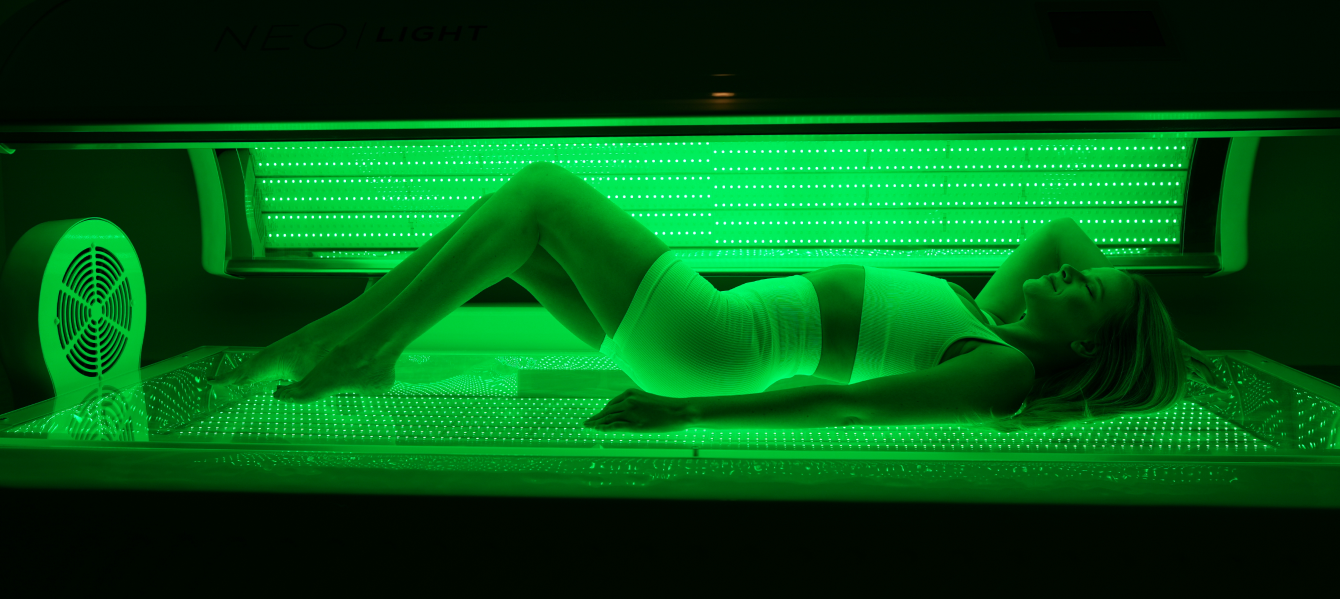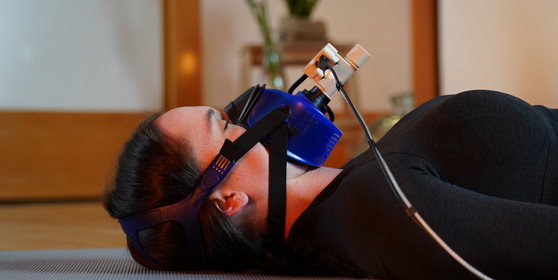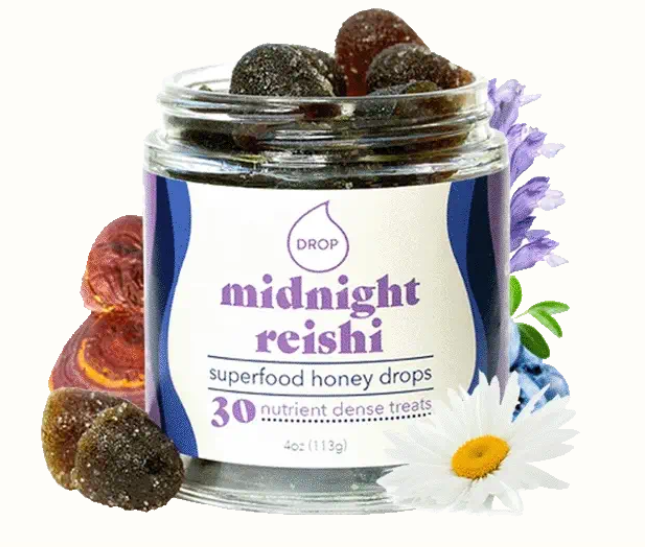How Infrared Light Can Help Your Body's Internal Clock During Fall and Winter
Infrared Light Benefits During Fall and Winter

As the days get shorter and the nights stretch longer, it’s easy to feel like your energy is drained, your sleep is off, and maybe even your mood is taking a dip. Let’s face it—fall and winter can be tough on our bodies, especially when the lack of sunlight messes with our internal body clock. But what if we told you there’s a way to help reset that clock and feel more in sync with the season—without having to power through endless cups of coffee? Enter infrared light therapy!
In this post, we’re diving into how infrared light therapy can help your sleep, mood, and overall energy levels during the colder months. Spoiler alert: it might just become your new best friend this winter!
What Is Your Circadian Rhythm?
Let’s take a quick detour to understand your circadian rhythm—because it’s key to understanding why light therapy works. Your circadian rhythm is like an internal 24-hour clock that runs in the background of your body. It controls when you feel sleepy, when you feel awake, your body temperature, and even the release of important hormones like melatonin (the sleep hormone).
Your circadian rhythm is heavily influenced by light. When it's bright and sunny, your body gets the message to wake up and stay active. When it’s dark outside, your body starts winding down, getting ready for sleep. Sounds pretty simple, right? But when the seasons change and sunlight becomes scarce (especially in fall and winter), your circadian rhythm can get a little off track.
That’s where infrared light therapy comes in.
What Is Infrared Light Therapy?
Infrared light is a type of light you can't see with your eyes, but it can penetrate deep into your skin and tissues. It is a hidden helper for your body, offering up all kinds of benefits—from promoting healing to reducing inflammation, and even helping with sleep.
There are three types of infrared light based on wavelength: near-infrared (NIR), mid-infrared (MIR), and far-infrared (FIR). For our purposes here, we’re mostly talking about near-infrared light (NIR), which is the kind that’s been studied for its ability to promote relaxation, improve circulation, and support better sleep and circadian rhythm regulation.
So, how exactly does this invisible light help you sleep better and stay in sync with the changing seasons? Let’s break it down.
How Infrared Light Affects Your Sleep & Circadian Rhythm
1. Helping You Sleep Like a Baby
When you’re exposed to light during the day—especially blue light from the sun—your brain gets the signal that it’s time to be awake and alert. This is great during the daytime but can mess with your melatonin levels as the sun sets. Infrared light helps support that delicate balance.
Infrared light doesn't directly "wake you up" or "put you to sleep" like sunlight does, but it can gently nudge your body toward a more balanced sleep-wake cycle. So, using infrared light therapy—whether in the morning or evening—can help your brain produce melatonin at the right times. This means you might fall asleep easier and enjoy deeper, more restorative sleep.
2. Boosting Relaxation and Sleep Quality
Speaking of sleep, infrared light also helps you chill out. Fall and winter can bring a lot of stress—between holiday hustle, end-of-year deadlines, and the cold weather making everything feel extra sluggish. Infrared light can help reduce muscle tension and ease the stress out of your body. A more relaxed body = better sleep.
Plus, infrared light helps improve circulation, which means better blood flow to your tissues and organs. When your body’s circulation is optimized, it can repair and regenerate while you sleep, making those precious hours of rest feel even more rejuvenating.
3. Regulating Your Body Temperature
Here’s the thing: your circadian rhythm and body temperature are BFFs. Normally, your body’s temp drops a little as you fall asleep and rises again when you wake up. But during the winter months, the cold can make it harder to ease into that sleep-friendly temperature drop.
Infrared light can help your body regulate temperature more effectively. By boosting circulation,
infrared light helps to warm up your body and create a cozy, sleep-friendly environment—no extra blankets needed. So, if you’re struggling to fall asleep in chilly conditions, infrared light might just be the warmth your body’s craving.
4. Fighting the Winter Blues (AKA Seasonal Affective Disorder)
Seasonal Affective Disorder (SAD) is real. The lack of sunlight during the fall and winter months can mess with your mood, leaving you feeling sluggish, irritable, and low on energy. While traditional light therapy (think full-spectrum or bright light boxes) is traditionally the go-to for SAD, infrared light can also help by giving your body a little mood boost.
Infrared light
stimulates the production of serotonin and endorphins—those feel-good chemicals that lift your spirits and reduce stress. So if you're feeling a little "meh" as the days get shorter, infrared light might help give you a boost.
How to Use Infrared Light Therapy This Winter
Now that we know how infrared light can help keep your circadian rhythm in check, how do you actually use it? Here are a few tips to make the most of infrared light therapy:
- Morning Boost: Start your day with a quick infrared light session. This can help kick-start your circadian rhythm and get your body ready for action. Think of it as a gentle "wake-up" signal when you're not getting enough natural sunlight. (The NEO Light Bed that we use at Swift has a blue light setting designed to increase energy and focus).
- Evening Chill: Wind down with infrared light in the evening to help relax your muscles, calm your mind, and prepare for a good night’s sleep. Just make sure not to overdo it, since too much light exposure late at night can mess with melatonin production (even infrared light!).
- Consistency is Key: To really feel the benefits, you’ll want to use infrared light therapy regularly—several times per week. This isn’t a one-time fix; think of it as a small daily habit that helps your body stay in sync with the changing seasons.
- Combine with Other Strategies: Infrared light therapy works well when paired with other circadian-friendly habits, like getting some natural sunlight during the day, limiting screen time in the evening, and sticking to a regular sleep schedule.
Final Thoughts
As the dark, cooler months set in, infrared light therapy can be a game-changer for your sleep, energy levels, and overall well-being. By supporting your circadian rhythm, helping you sleep more soundly, and even lifting your mood, infrared light can help you make the most of fall and winter.
So, if you're tired of the winter blues and struggling with your sleep schedule, why not give infrared light therapy a try? It might just be the little hack your body’s been craving. Stay warm, stay rested, and let infrared light be your ally this season!
Through the end if the
November – you can purchase ONE MONTH of UNLIMITED Light Therapy sessions in the
NEO Light Bed for only $200! This is a great opportunity to give it a try and see all of the positive benefits!



